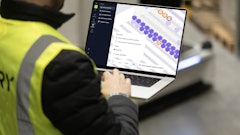
U.S. manufacturers face a daunting set of challenges that threaten their ability to remain competitive in an increasingly globalized market. Fierce competition from low-cost international imports, combined with significant downtime impact from recent port strikes, is pushing many companies to their limits. Though recent interest rate reductions have offered short-term relief to some sectors, the supply chain ecosystem continues to feel pressure. This can leave manufacturers wondering how to maintain a competitive edge.
Stability as a Foundation for Innovation
Innovation and cost optimization have often been cited as crucial strategies for gaining a competitive advantage. However, true innovation requires a stable and reliable foundation. Manufacturers need systems that are robust enough to support innovative initiatives without being disrupted by constant upgrade cycles. Too often, frequent forced upgrades disrupt business operations, making it difficult for manufacturers to focus on the innovations that matter, such as digital transformation or the implementation of smart factory technologies.
For many manufacturers, systems such as SAP ECC remain a highly stable and capable platform that meets current business needs. SAP is sunsetting this platform as part of its push to migrate customers to S/4 HANA — a costly move for many enterprises. By choosing to extend the lifecycles of critical systems such as this one rather than moving to newer systems pushed by vendors, companies can reallocate savings toward critical projects like Manufacturing 4.0 and smart factory initiatives. The key is maximizing the value of existing ERP systems while minimizing disruptions that detract from forward-looking strategies.
Reallocating Capital for Innovation
A significant portion of capital is often tied up in ERP systems, which are mission-critical to business operations. By refining ERP management and reducing associated costs, manufacturers can unlock resources to invest in future-focused initiatives such as real-time visibility tools, advanced supply chain digitalization, and AI-driven efficiencies.
Rather than funneling resources into expensive, vendor-driven upgrades, executives should consider reallocating funds toward projects that enhance flexibility, such as multi-supply chain strategies that provide resiliency against future disruptions.
Breaking Free from the Upgrade Treadmill
Countless companies overspend on IT because of vendor pressure to upgrade to newer versions or adopt the latest technology trends. These updates, though often touted as essential, often do not provide substantial returns on investment. In fact, many manufacturers find that their current ERP systems are still highly effective and meet the business’s needs. Yet, they feel compelled to follow the vendor’s push to upgrade, particularly in light of the increasing buzz around artificial intelligence (AI) and cloud solutions.
Rather than chasing vendor-driven trends, manufacturers would benefit more from focusing on initiatives and technologies that align with their own strategic goals, budgets and timelines. A significant way to fund these innovation-driven initiatives is by exploring alternative support models.
With ERP systems, for instance, many manufacturers have tailored their ERP to fit their unique business processes, creating complex customizations that are not typically supported by the original software vendor. This lack of support often necessitates additional staffing or resources, increasing operational costs.
By looking beyond the vendor for support solutions, IT leaders can ease the financial burden on their organizations and channel those savings into transformative projects such as supply chain digitalization, AI-driven efficiencies or the implementation of smart factories.
Prioritizing the Right IT Partnerships
Proper management of core IT systems, especially ERPs, is essential to helping ensure uptime and business continuity. Relying solely on software vendors for upgrades and support can expose manufacturers to unnecessary risks, as these providers may not always be responsive to specific needs or urgent problems. By diversifying their support options and partnering with expert support professionals, manufacturers can help reduce the risk of costly downtime and improve their ability to respond quickly to potential disruptions.
The right IT partner can help manufacturers maintain uptime by addressing vulnerabilities in their systems, helping ensure that operations run smoothly even in the face of external challenges. This proactive approach reduces the need for reactive firefighting and helps manufacturers stay focused on strategic initiatives that drive growth.
The right IT partnership is especially critical amidst the current technology skills gap. The demand for adequate support of critical systems is outweighing the current availability of skilled professionals, and as this pool remains small, it is vital for enterprises to ensure that the continuity of their foundational systems is managed by skilled professionals.
A Strategic IT Approach for Long-Term Success
In today’s resource-constrained environment, manufacturers need every dollar and every employee to contribute to strategic goals. By resisting the disruptive cycle of constant upgrades, extending the life of their stable ERP systems and investing in flexible, innovative initiatives, IT leaders can drive long-term success. This approach not only helps manufacturers tackle current challenges but also positions them to lead in the future of manufacturing, where technologies like Manufacturing 4.0 and smart factories will be essential.














![Pros To Know 2026 [color]](https://img.sdcexec.com/mindful/acbm/workspaces/default/uploads/2025/08/prostoknow-2026-color.mduFvhpgMk.png?ar=16%3A9&auto=format%2Ccompress&bg=fff&fill-color=fff&fit=fill&h=135&q=70&w=240)


